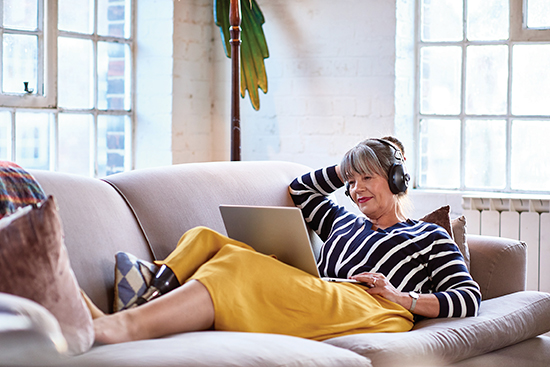(Family Features) Even before COVID-19 limited social contact with friends, family and colleagues, many adults experienced loneliness and depression due to limited contact with others. Now, a year after the pandemic forced many people into even greater levels of isolation, the issue of social isolation is especially prevalent in Americans over the age of 50.
Despite the physical implications of a global pandemic, research shows the mental health stakes are high, too. A nationwide survey, commissioned by Barclays, found that half of Americans over the age of 50 said the isolation from their friends and family has been more challenging than concerns over health risks they may face.
Social isolation has provided plenty of time for Americans to reflect on their priorities. The majority of Americans surveyed (90%) have re-evaluated their post age-50 goals and put spending more time with family at the top of their lists. In fact, the most common first thing 50-plus Americans will do once COVID-19 is over is to see and spend time with their families (41%).
“While restrictions are beginning to ease, many older adults are still isolated from friends and family, and that takes a toll on their mental well-being” said Lisa Marsh Ryerson, president of the AARP Foundation. “We must do all we can to help older adults, who have suffered greatly during COVID-19, strengthen the social connections that are so essential to their ability to lead longer, healthier lives.”
For example, AARP Foundation’s Connect2Affect platform equips older adults with the tools they need to stay physically and mentally healthy and connected to their communities. The AARP Essential Rewards Mastercard from Barclays is helping fund the foundation’s work to increase social connection with donations based on new accounts and eligible purchases, up to $1 million annually.
A little creativity and a commitment to filling time productively can help reduce the strain of being alone until it’s safer to resume social activities.
Use technology to connect with loved ones. Video chats and traditional phone calls can help you feel connected even when you can’t be together in person. While a drop-in call can be fun, consider arranging regular visits with kids and grandkids. If you schedule calls throughout the week, you’ll have something regular to look forward to and can benefit from a check-in that affirms everyone is healthy and safe.
Make time for physical activity. Staying closer to home may mean you’re not getting the exercise you once did, but it’s important for your health to stay active. Regularly using your muscles helps keep your body strong, and even light physical activity a few times each week can help keep your cardiovascular system fit for better heart health. Regular exercise can also provide a range of positive mental health outcomes, including reduced stress, anxiety and depression, and improved memory.
Volunteer in your community or consider virtual volunteering. Helping others is a way to release feel-good endorphins for yourself. While your limited social calendar may afford you some extra time, inquire with local nonprofits about how you can contribute to their causes. Especially as funding for charitable organizations has dropped, volunteers are still essential to most nonprofit organizations, whether the help comes in person or virtually. Even from a distance, you may be able to help with tasks like making calls to donors, assisting with mailings or planning fundraising campaigns.
Learn a new hobby or skill. Another way to fill your free time, and reap some positive energy, is to explore a new hobby or skill. The personal satisfaction of learning and focusing your mental energy on something that interests you can help offset the disappointment of being away from those you love.
Find more resources that support older adults at connect2affect.org.
Photos courtesy of Getty Images








